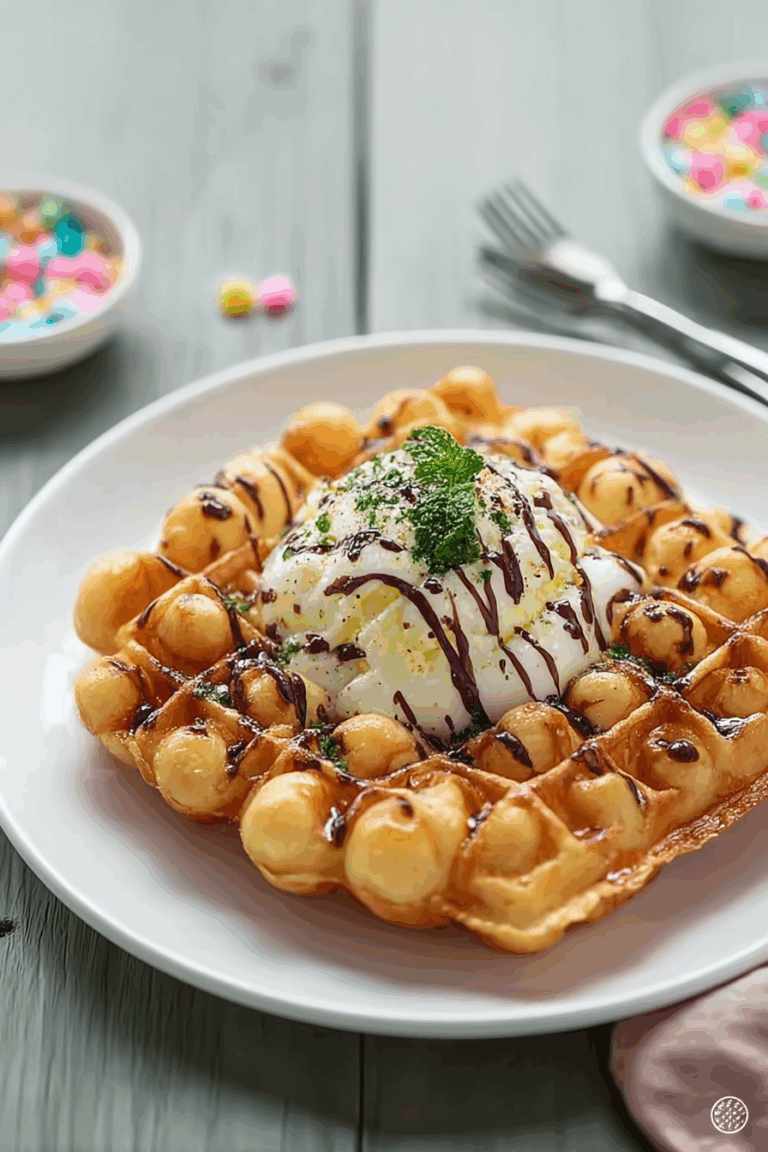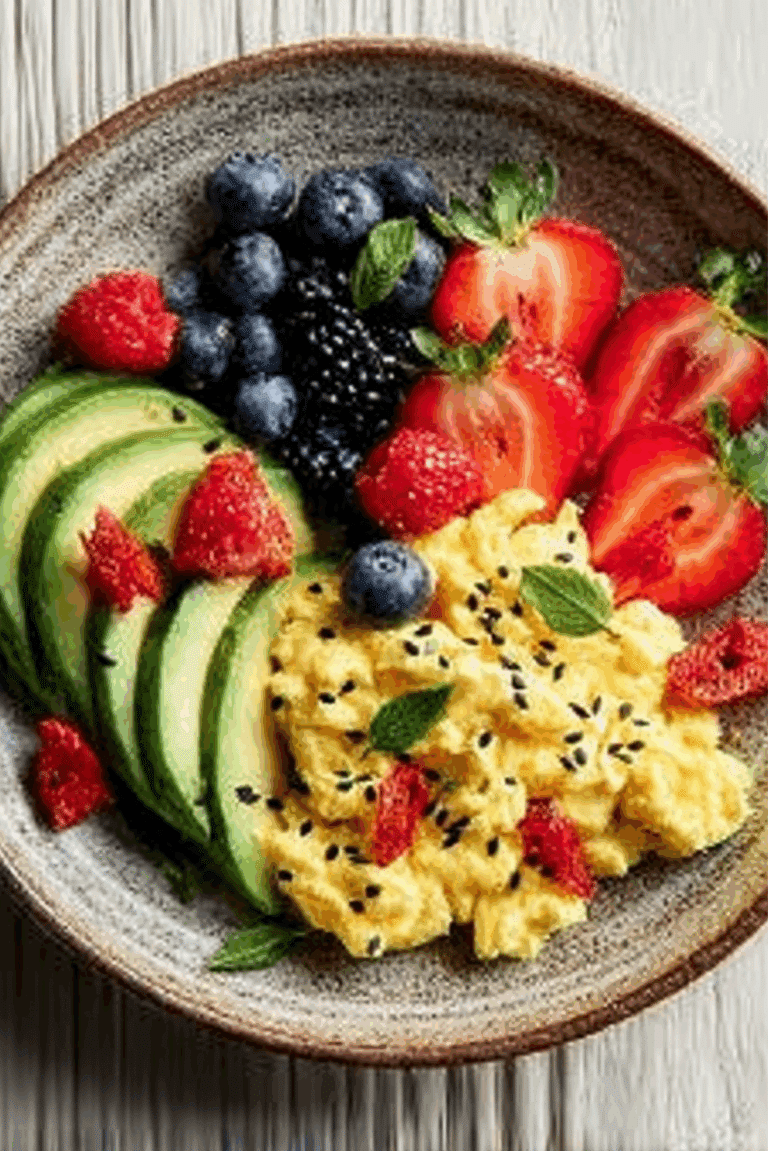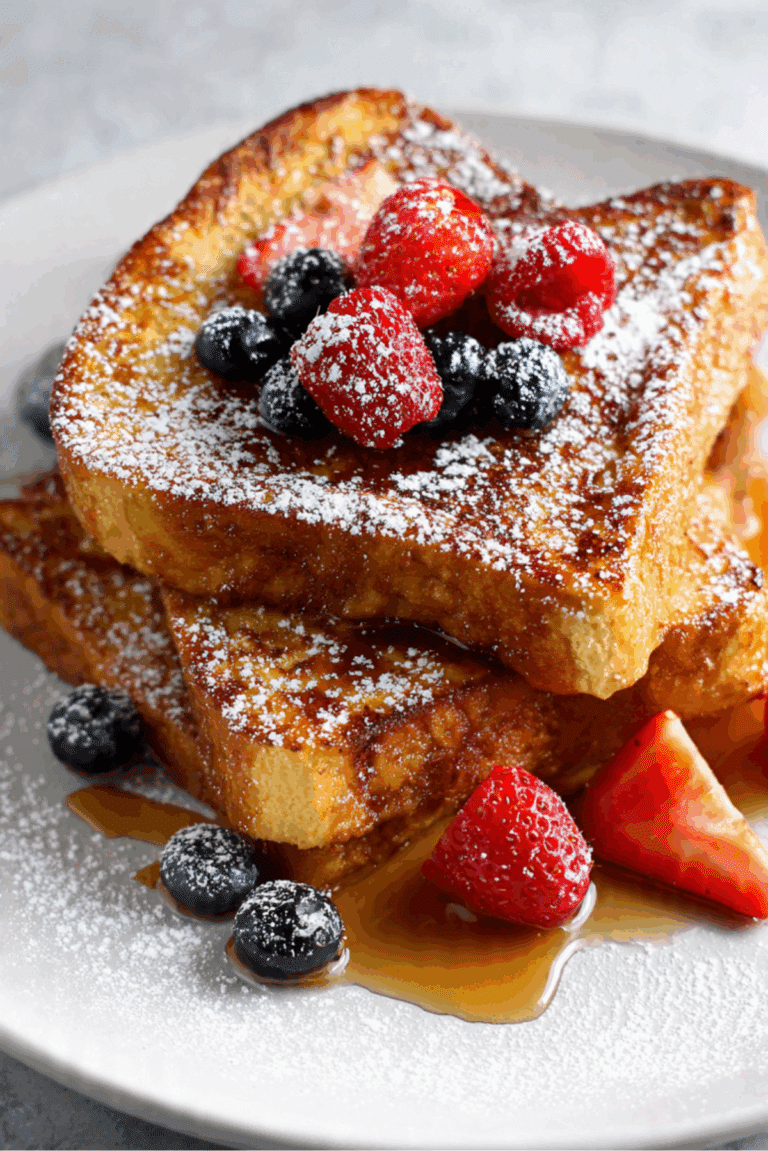Japanese Milk Bread
There is something magical about the moment you slice into a loaf of Japanese Milk Bread. The soft steam escapes, the cloud like interior reveals itself, and suddenly the whole kitchen feels warmer. This loaf is tender, slightly sweet, and incredibly fluffy, the kind of bread that makes you pause for a second before taking that first bite. Trust me, you are going to love this.
Behind the Recipe
As I started baking this loaf, I was reminded of quiet mornings when the world still felt slow. Japanese Milk Bread has that gentle comfort that wraps around you, almost like a warm blanket. It is the kind of bread that feels like home even if it is your first time making it, which is why I always come back to it when I need something simple and soothing.
Recipe Origin or Trivia
Before we move on, it helps to know where this soft, stretchy loaf began. Japanese Milk Bread, also known as Shokupan, became popular thanks to the tangzhong method, which involves cooking a small portion of the flour and milk into a paste. This method locks in moisture and creates that iconic fluffiness. Some bakers say the method came from Asian baking traditions which prioritized extra moist and soft bread textures.
Why You’ll Love Japanese Milk Bread
There are so many reasons this recipe becomes a staple, and now let us go through them together.
Versatile: This loaf works beautifully for sandwiches, toast, French toast, or simply pulling off a warm corner and eating it on its own.
Budget-Friendly: With basic pantry ingredients, this recipe delivers impressive bakery style results without spending much.
Quick and Easy: Once you try the tangzhong method, you will see how simple it is to achieve that delicate texture.
Customizable: Add a sprinkle of seeds on top or swirl in a bit of cinnamon sugar if you like playing with flavors.
Crowd-Pleasing: Everyone who tastes it ends up asking for the recipe which makes it a wonderful gift bread for gatherings.
Make-Ahead Friendly: The dough can be prepped ahead which helps on busy days.
Great for Leftovers: Even the next day, leftovers remain soft and tender when toasted lightly.
Chef’s Pro Tips for Perfect Results
Before we jump into the steps, let me share a few secrets that bring out that cloud like texture.
- Use warm milk to help your yeast activate properly.
- Knead the dough until it becomes smooth and stretchy which develops the gluten structure.
- Let the tangzhong cool before adding it to the dough so the yeast stays happy and active.
- Allow your dough to rise fully which ensures the signature fluffiness.
- Brush the top with milk before baking to get a shiny golden crust.
Kitchen Tools You’ll Need
You do not need anything fancy here, just a few simple tools to guide you along.
Loaf Pan: Helps shape the soft dough into that classic tall loaf.
Small Saucepan: For preparing the tangzhong paste.
Mixing Bowls: To combine ingredients and let the dough rise comfortably.
Wooden Spoon or Spatula: Great for stirring the tangzhong smoothly.
Stand Mixer or Hands for Kneading: Either will work beautifully for developing the dough.
Kitchen Scale: Optional but helpful for precise measurements.
Ingredients in Japanese Milk Bread
The ingredients come together like a small orchestra. Each element plays its part in building that soft, cloud like texture.
- Bread Flour: 3 cups (360 g) gives structure and strength which helps the loaf rise tall.
- Whole Milk: 1 cup (240 ml) adds moisture and richness which comforts the crumb.
- Unsalted Butter: 4 tablespoons (55 g), softened brings tenderness and a gentle richness.
- Granulated Sugar: 4 tablespoons (50 g) sweetens lightly and feeds the yeast.
- Salt: 1 teaspoon balances the sweetness and strengthens the dough.
- Instant Yeast: 2 teaspoons ensures a reliable and fluffy rise.
- Egg: 1 large enriches the dough which makes it even softer.
- Tangzhong Mixture: made from 3 tablespoons flour and 1 half cup milk cooked into a smooth paste which creates that signature softness.
Ingredient Substitutions
Before you begin mixing, here are a few options in case you need swaps.
Milk: You can replace with oat milk or soy milk.
Butter: You can use softened coconut oil.
Sugar: You can use honey, although the flavor will be slightly different.
Bread Flour: All purpose flour works, though the texture will be slightly less chewy.
Ingredient Spotlight
Tangzhong Paste: This magical cooked mixture traps moisture which gives the bread its famously soft texture.
Bread Flour: Higher protein content creates the elasticity that lets the loaf rise beautifully.

Instructions for Making Japanese Milk Bread
Now we are ready to bring it all together, step by step, just like we are baking side by side.
- Preheat Your Equipment: Warm your loaf pan with a quick rinse of warm water and lightly grease it so the dough settles comfortably.
- Combine Ingredients: Whisk the dry ingredients, then add the milk, tangzhong, butter, and egg. Mix until the dough starts to form.
- Prepare Your Cooking Vessel: Your loaf pan should be ready and lightly buttered to keep the dough from sticking.
- Assemble the Dish: Shape the dough into three equal balls and nestle them inside the loaf pan to get that classic pillowy top.
- Cook to Perfection: Bake at 350 degrees Fahrenheit for about 28 to 32 minutes, or until golden brown.
- Finishing Touches: Brush the top with warm milk right after baking to give the loaf a gentle shine.
- Serve and Enjoy: Let it cool slightly, then slice or tear off a soft piece. It is worth every bite.
Texture & Flavor Secrets
Japanese Milk Bread tastes like a whisper of sweetness wrapped in a soft, stretchy crumb. The tangzhong helps create a moist, cloudy interior, while the milk and butter add a cozy richness. Every bite feels tender which makes it almost melt in your mouth.
Cooking Tips & Tricks
Here are a few friendly reminders that help the loaf turn out just right.
- Use warm, not hot, milk so the yeast stays alive.
- Knead until the dough is smooth which ensures the softest crumb.
- Let the dough rise in a warm place for the best fluffiness.
What to Avoid
To save yourself frustration, here are a few things to watch out for.
- Avoid over flouring the dough which makes the bread dense.
- Do not rush the proofing which prevents the loaf from rising tall.
- Avoid cutting while hot which compresses the crumb.
Nutrition Facts
Servings: 10
Calories per serving: 180
Note: These are approximate values.
Preparation Time
Prep Time: 25 minutes
Cook Time: 30 minutes
Total Time: 2 hours including rising time
Make-Ahead and Storage Tips
This loaf is perfect for planning ahead. You can make the dough the night before and let it rise slowly in the refrigerator. Leftover slices keep well when wrapped tightly, and you can freeze the baked loaf by wrapping it in layers of plastic and storing it for up to a month.
How to Serve Japanese Milk Bread
Enjoy it warm with butter and jam, turn it into French toast, build a delicate sandwich, or toast it lightly to bring back that fresh bakery aroma.
Creative Leftover Transformations
Leftover slices make wonderful bread pudding, crispy croutons for soups, or sweet breakfast toasts with cinnamon sugar.
Additional Tips
Keep your butter soft, measure your flour accurately, and give the dough time to rest. Each small step helps create that unforgettable fluffy texture.
Make It a Showstopper
Brush with milk before baking for a glossy finish, slice evenly for photo worthy presentation, and serve on a wooden board for a warm and rustic look.
Variations to Try
- Add a swirl of cinnamon sugar inside the dough.
- Sprinkle sesame seeds or poppy seeds on top.
- Make a chocolate chip version by folding in mini chips.
- Try a matcha swirl for a stunning green and white interior.
- Add a bit of shredded coconut to the dough for light sweetness.
FAQ’s
Q1: Can I make this dough by hand?
A1: Yes, it just takes a little longer to knead until smooth.
Q2: Can I use all purpose flour?
A2: Yes, although the loaf may be slightly less chewy.
Q3: Can I freeze the baked bread?
A3: Absolutely, wrap it tightly and freeze for up to one month.
Q4: Can I use active dry yeast?
A4: Yes, just bloom it in warm milk first.
Q5: Can I bake this in a pull apart round shape?
A5: Yes, it works beautifully in a round pan.
Q6: Why is my loaf dense?
A6: It may be from under kneading or under proofing.
Q7: Can I halve the recipe?
A7: Yes, simply scale the ingredients evenly.
Q8: Why did my crust turn too dark?
A8: Every oven is different, so you can tent with foil during baking.
Q9: Can I sweeten it more?
A9: Yes, add one or two extra tablespoons of sugar.
Q10: Can I add fillings?
A10: Yes, try chocolate, raisins, cinnamon, or custard.
Conclusion
Japanese Milk Bread is the kind of recipe that stays with you. It is soft, warm, and comforting which means once you make it, you will want to make it again. Let me tell you, it is worth every bite, and I hope it brings the same cozy joy to your kitchen.
Print
Japanese Milk Bread
- Prep Time: 25 minutes
- Cook Time: 30 minutes
- Total Time: 2 hours
- Yield: 1 loaf 1x
- Category: Bread
- Method: Baking
- Cuisine: Japanese
- Diet: Vegetarian
Description
A soft, cloud like Japanese Milk Bread made with the tangzhong method for the fluffiest, most tender slices.
Ingredients
- 3 cups bread flour (360 g)
- 1 cup whole milk (240 ml)
- 4 tablespoons unsalted butter, softened (55 g)
- 4 tablespoons granulated sugar (50 g)
- 1 teaspoon salt
- 2 teaspoons instant yeast
- 1 large egg
- Tangzhong: 3 tablespoons flour + 1/2 cup milk cooked into a paste
Instructions
- Prepare the tangzhong by cooking the flour and milk until thickened, then let cool.
- Mix the dry ingredients together and add the milk, tangzhong, butter, and egg.
- Knead the dough until smooth and stretchy.
- Let the dough rise until doubled, about 1 hour.
- Divide into three balls and place them into a greased loaf pan.
- Let rise again until puffy.
- Bake at 350°F for 28 to 32 minutes until golden.
- Brush the top with warm milk and let cool before slicing.
Notes
- Use warm milk to activate the yeast properly.
- Do not over flour the dough to maintain softness.
- Let the bread cool slightly before slicing to keep the crumb tender.
Nutrition
- Serving Size: 1 slice
- Calories: 180
- Sugar: 5 g
- Sodium: 160 mg
- Fat: 4 g
- Saturated Fat: 2 g
- Unsaturated Fat: 1 g
- Trans Fat: 0 g
- Carbohydrates: 30 g
- Fiber: 1 g
- Protein: 5 g
- Cholesterol: 20 mg
Keywords: Japanese milk bread, shokupan, fluffy bread, tangzhong bread







